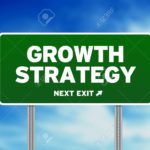
Michal Porter’s five forces is an important strategic planning tool. It is a powerful tool that helps strategy analysts understand how competitive their industries are and their potential profitability. Porter has identified five competitive forces that shape every industry. This article explores each of Porter’s five forces.
Who is Michael Porter?
Michael Porter was born in 1947. He is one of the greatest thinkers on management and competitiveness. He is an American academic and is the author of 19 books and over 130 articles. Porter is the Bishop William Lawrence University Professor at Harvard Business School and the director of the school’s Institute for Strategy and Competitiveness, which was founded in 2001 to further his work and research (Institute for Strategy & Competitiveness, n.d).
Understanding Porter’s five forces
It is extremely important for organisations to keep an eye on their competitors. However, Porter encourages organisations to look beyond the activities of their competitors and explore other powerful forces that can impact on their business environment quite significantly. He identified five such forces as follows:
Competitive rivalry
The number of competitors in the marketplace and their power to threaten each other determines how attractive an industry is. A large number of competitors offering similar products and services can make an industry less attractive. Price wars are very common when competitive rivalry is high which can hurt a company’s profitability. Rivalry among competitors is intense when there are many competitors in the market and exit barriers are high. Likewise, undifferentiated products and low level of customer loyalty intensifies competitive rivalries.
Bargaining power of suppliers
Organisations need suppliers for a variety of reasons. Therefore, marketers spend a lot of time to identify and select the best suppliers at the best price. Sometimes, suppliers have greater power on a business and can control it to a great extent. Consequently, they can lower a business’s profitability making the industry less attractive. The fewer the suppliers are out there in the market, the more power they have over businesses. When businesses have more power than suppliers, the industry is attractive. Businesses are in a better position when there are a multitude of suppliers.
Bargaining power of customers
Can buyers put pressure on businesses to lower their prices? Yes, they can. However, not all the time though. This force of bargaining power of customers looks at how powerful customers to impact on the pricing and quality of businesses. If there are more sellers than customers in an industry, customers have bargaining power which in turn reduces the profitability of businesses. However, if there are more customers than businesses and customers do not have many options to switch from one company to another, then businesses have more bargaining power. Consequently, they can increase their price and profitability. From the perspective of this force, the energy industry in the UK is very attractive.
Threat of new entrants
If an industry seems attractive, the likelihood of new entrants entering into it is high. And if a large number of new entrants step in, it will lower profitability across the industry and the attractiveness will decline. The position of existing businesses is higher if there are significant barriers to entering the market. If an industry has low entry-barriers, the threat of new entrants will be high resulting in the industry being less attractive. Economies of scale, brand loyalty, government regulations, customer switching, and specialist industry knowledge are some of the powerful barriers.
Threat of substitute products or services
When substitute products exist in abundance in a market, many customers may switch to them, particularly to respond to price increases by businesses. This reduces an industry’s attractiveness. Threat of substitute products or services is especially problematic when customers can easily find substitute products and services with better quality and less price. How much will it cost a customer to switch from coffee to tea? Perhaps, nothing!
To conclude, Porter’s five forces is an extremely useful tool to understand attractiveness of an industry and its potential profitability. It works best when analysts use it to look at an industry, rather than just their own businesses and a few competitors.
The article publication date: 09 July 2017
Further reading/References
Institute for Strategy & Competitiveness, (n.d), About Michael Porter, available at: http://www.isc.hbs.edu/about-michael-porter/Pages/default.aspx (Accessed 09 July 2017)
Porter, M. (1979) How Competitive Forces Shape Strategy, Harvard Business Review, (Vol 57, March – April) p.86-93
Photo credit: slideplayer.com
Author: M Rahman
M Rahman writes extensively online and offline with an emphasis on business management, marketing, and tourism. He is a lecturer in Management and Marketing. He holds an MSc in Tourism & Hospitality from the University of Sunderland. Also, graduated from Leeds Metropolitan University with a BA in Business & Management Studies and completed a DTLLS (Diploma in Teaching in the Life-Long Learning Sector) from London South Bank University.


